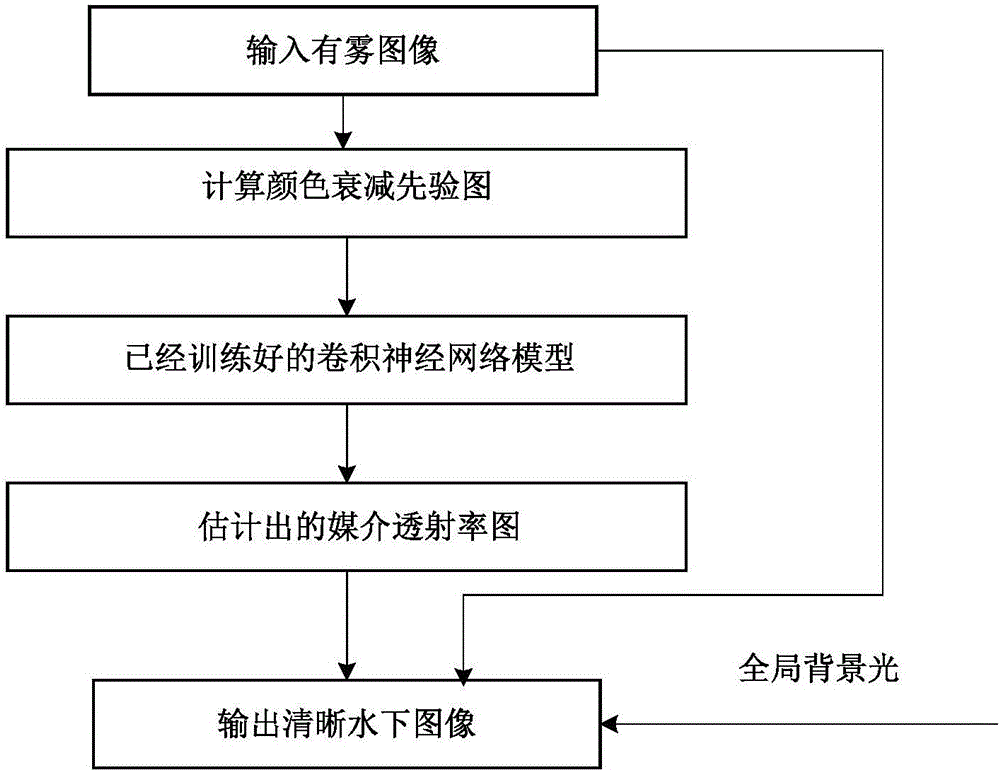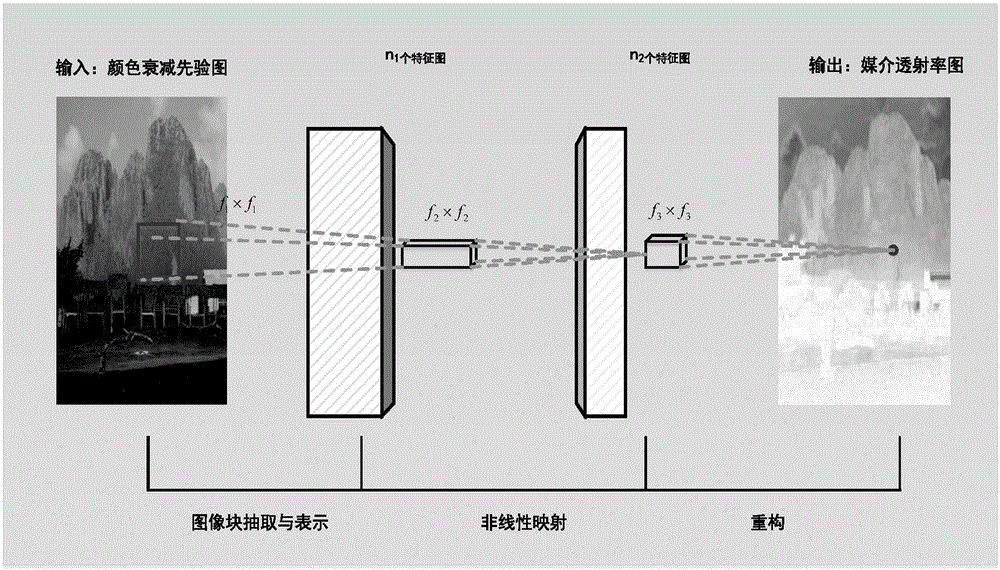Image defogging method based on convolutional neural network and prior information
A technology of convolutional neural network and prior information, applied in the field of image defogging based on convolutional neural network and prior information, to achieve the effect of good robustness, real and natural images, and fast training speed
- Summary
- Abstract
- Description
- Claims
- Application Information
AI Technical Summary
Problems solved by technology
Method used
Image
Examples
Embodiment Construction
[0039] The invention makes full use of the learning ability of the deep learning network framework and the effectiveness of the prior information of the foggy image, and invents an image defogging method based on the convolutional neural network and the prior information. The imaging model of foggy weather can be expressed as:
[0040] I(x)=J(x)t(x)+A(1-t(x)),
[0041] In the formula, I(x) is the image taken in foggy days, J(x) is the clear image, A is the global background light, and t(x)∈[0,1] is the medium transmittance. Media transmittance is a key factor for image defogging, and it is related to the depth of the shooting scene, which can be expressed as:
[0042] t(x)=exp(-βd(x)),
[0043] In the formula, β is the atmospheric attenuation factor, and d(x) is the scene depth. In order to recover a clear image, it is crucial to accurately estimate the medium transmittance of the image. The present invention conducts research on accurate estimation of medium transmittance...
PUM
 Login to View More
Login to View More Abstract
Description
Claims
Application Information
 Login to View More
Login to View More - R&D
- Intellectual Property
- Life Sciences
- Materials
- Tech Scout
- Unparalleled Data Quality
- Higher Quality Content
- 60% Fewer Hallucinations
Browse by: Latest US Patents, China's latest patents, Technical Efficacy Thesaurus, Application Domain, Technology Topic, Popular Technical Reports.
© 2025 PatSnap. All rights reserved.Legal|Privacy policy|Modern Slavery Act Transparency Statement|Sitemap|About US| Contact US: help@patsnap.com



